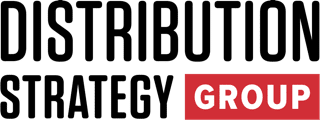Tariffs are unpredictable, and their ripple effects can be immediate. Sudden shifts in trade policy can upend inventory strategies, strain supplier relationships and complicate pricing.
But with the right intelligence, distributors can act quickly, protect their margins and maintain customer trust even in volatile markets.
Here’s how:
- Map the Tariff Exposure
Before you can respond strategically, you need to understand where you’re most at risk. Start with identifying which SKUs fall under current or proposed tariffs, and cross-reference them with country-of-origin data. For many distributors, this could include mechanical parts, fasteners, and electrical components from countries like China, Vietnam or Mexico.
Also consider mapping exposure by suppliers, customers and timing:
- Who are your top suppliers for goods and how dependent on them are you?
- Which customers rely most heavily on the affected products?
- How soon will tariff-related cost increases hit?
This analysis will help you focus your efforts, whether that’s supplier negotiation, pricing adjustments, and sourcing alternatives.
- Explore Domestic Alternatives
Next, evaluate whether U.S.-based suppliers or manufacturers can fill the gap. While onshoring may not always be the lowest-cost option, it can provide more stability. Lead times also need careful review. Domestic suppliers may have shorter lead times, but different minimum order quantities or pricing tiers.
Consider which SKUs are the best candidates for domestic sourcing; identify suppliers with a track record of reliability in your category; and evaluate logistics advantages such as shorter lead times that may offset higher costs.
For higher-risk categories, consider models that could split between international and domestic sources.
- Analyze Portfolio Impact
Understanding which SKUs are affected is just the start. Apply market data intelligence to your product portfolio to gain a full picture of your business: which SKUs are affected, how dependent your revenue is on these products, and what risk levels exist.
- How much of your revenue comes from at-risk products? High-margin and high-volume items should be priorities.
- How profitable are those items? Some products may be low-margin or slow-moving. But others may be critical to customer relationships.
- Are certain product categories or segments more vulnerable than others?
- Time the Bottom-Line Effect
Understanding when the impacts will show up is important. This clarifies when tariff impacts will hit your financials. Cross-reference affected SKUs with:
- Current inventory levels
- Open purchase orders
- In-transit shipments
Then estimate the impact windows, using expected delivery dates and sell-through rates to estimate when higher costs will hit your P&L. Consider how long your existing inventory will hold before required price increases hit. Segment what you have by urgency and typical inventory turnover.
- Forecast Demand
Tariffs shift more than costs. Customer behavior also changes. Build demand forecasts for affected products to anticipate whether customers will stockpile, shift demand or reduce purchases so you can proactively plan inventory and pricing moves.
Some considerations:
- Look at historical behavior around tariffs or cost increases. Did customers place larger-than-usual orders? Did they switch to alternate products?
- Talk to key accounts to understand customers’ plans.
- Incorporate external signals, such as market data, economic indicators and tariff timing to adjust forecasts.
- Align your forecast with pricing and sourcing plans, such as securing stock earlier during a short-term demand spike.
- Run What-If Procurement Scenarios
And that leads us to scenario planning. Plan for what’s next, not just one outcome but several. Scenario planning allows you to model the financial and operational effects of different tariff outcomes and prepare to protect your margins and customer relationships.
Start by modeling the financial impact of different tariff levels on key categories. This helps you build business cases for cost absorption, supplier renegotiations, or customer pricing changes. For example:
- What if tariffs increase from 10% to 25%?
- What if certain SKUs are suddenly subject to new tariffs?
- What happens if you replace 20% of imports with U.S.-based suppliers?
The goal is to then quantify the cost impact across affected SKUs, forecast margin erosion and evaluate your sourcing mix. What procurement mix keeps cost inflation low for customers while preserving your margins? And then build a strategy:
- Can you absorb some of the cost increases for strategic products without hurting profitability?
- How can you use the models to re-engage suppliers, whether to ask for price concessions or shift to alternative items?
- Which accounts or categories need new pricing strategies?
- Apply Inventory Intelligence
Your inventory strategy should not only reflect today’s tariff environment but also your outlook on how long those conditions will last and how your customers are likely to respond. Based on SKU criticality, demand velocity and tariff exposure:
- If tariffs are temporary, increase inventory on high-demand or high-margin items now to delay impact. This can buy time while evaluating sourcing and terms.
- If tariffs persist or escalate, reduce inventory to avoid carrying expensive stock. Limit reorders on affected items and avoid tying up cash in inflated-cost products that could be harder to sell later.
Other considerations include balancing availability with cash flow and tracking obsolescence risk if tariff-driven cost changes make some products less attractive to customers.
Inventory intelligence helps distributors stay nimble, maintain service levels, and protect both margins and cash flow in a volatile tariff environment.
- Deliver Actionable Recommendations
It’s now time to translate this analysis into a clear action plan. Your recommendations should equip teams with data-driven next steps that protect your profitability, preserve customer relationships and increase resilience.
Here’s what a plan might include:
- A smarter supplier and product mix to optimize sourcing
- Updated customer pricing based on actual cost impact
- Revised kitting/bundling suggestions to maximize perceived value (such as swapping out a high-tariff component with a lower-cost alternative)
- Bulk-buy options with suppliers before tariffs spike
- Global inventory shifts to move lower-cost inventory from less-affected locations, where legally feasible, to balance load and delay price hikes for customers
Tariffs don’t have to break your business.
With real-time market data, smart portfolio analysis and tactical supplier moves, distributors can cushion the blow, protect margins and even gain ground while others scramble.
Much of the analysis we cover in this article can be done quickly and effectively with AI, natural language processing, image recognition and advanced modeling techniques. The goal is to generate actionable plans and run comprehensive scenario analyses to support informed decision-making in a time of uncertainty.
Distributors can quickly test multiple mitigation strategies and identify the most effective path forward. As tariff conditions shift, they can evaluate new scenarios on the fly, adapting to the fast-changing market realities.
Kruti Rao, Product Manager, and Leo Zhang, Client Services Head – North America), co-authored this article with Chandra Subramanian.
Chandra Subramanian is the CEO of Deda AI North America, a seasoned technology executive, and an active investor in early-stage startups. At Deda AI, he focuses on democratizing decision intelligence for distributors and manufacturers —bridging human expertise with machine learning to enable smarter, faster enterprise decisions. With over 25 years of experience at the intersection of AI, enterprise systems, and financial services, he combines deep technical expertise with a strong track record of strategic leadership. He has led global, cross-functional teams and managed multi-million-dollar P&Ls in senior management roles at companies such as Koopid, Semantify, Indra, and Quinnox. He is known for building and scaling AI-powered platforms that drive business transformation. Chandra holds a bachelor’s degree in physics and a master’s in computer applications.

